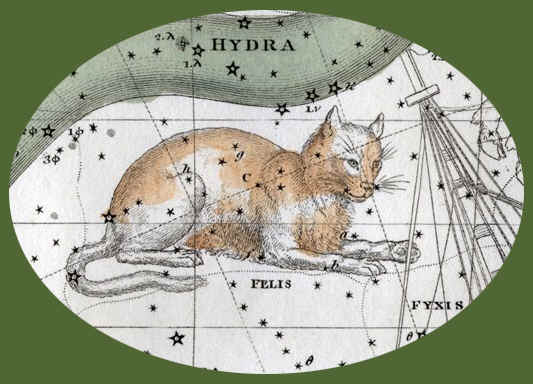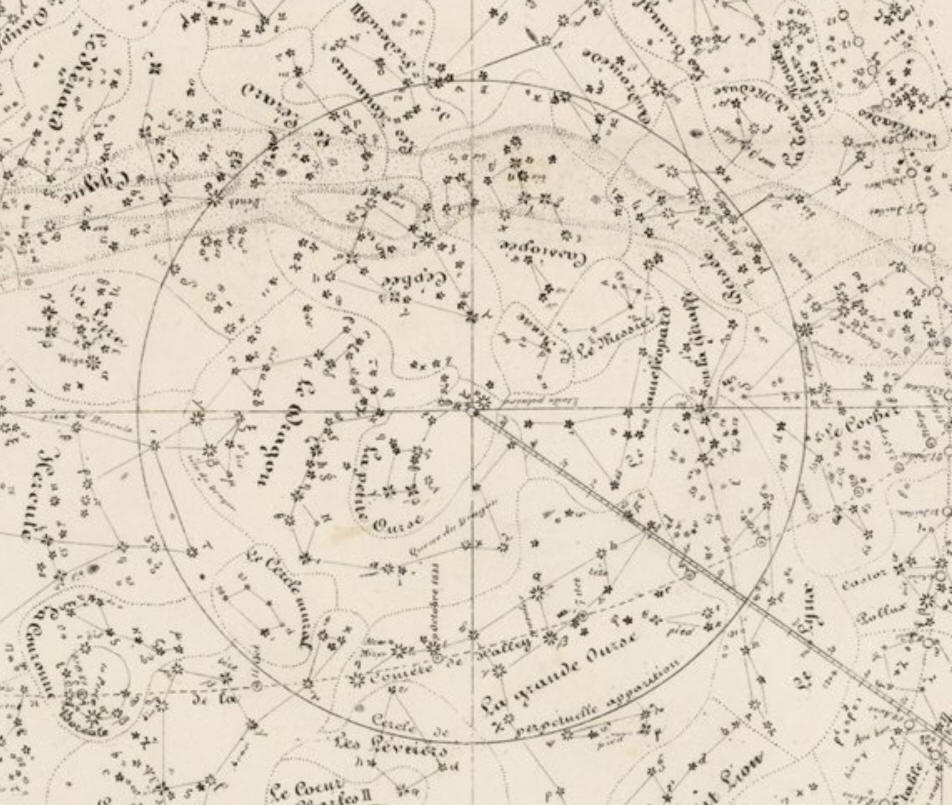
|
Louis-François Wartmann |
Carte Celeste Indiquant la trajectoire de la Comete de Halley dans son retour en 1835.., Ginevra 1835
|
Louis-François Wartmann
Carte Celeste Indiquant la trajectoire de la Comete de Halley dans son retour en 1835.., Ginevra 1835

Il planisfero celeste di L. F. Wartmann, 70 per 54 cm circa, riporta come sottotitolo un’ ampia descrizione dei fenomeni cometari che vi sono rappresentati:
Carte Celeste Indiquant la trajectoire de la Comete de Halley dans son retour en 1835, et ses positions géocentriques á des intervalles de dix, de quatre et de deux jours, pendant l'espace de seize mois, d'après les éphémérides de Messrs. Bouvard et Olbers, reposant sur les élémens de Mons. Pontecoulant, en éliminant la résistance de l'éther et en fixant le passage périhélie au 12,6 - Novembre, tems astronomique, compté de midi au méridien de Paris ou au 13 Novembre à 2h 39m 16s du matin temps civil au méridien de Genève, avec le lieu comparatif que la Terre occupera dans son orbite, de quinze en quinze jours, durant l'apparition de la Comète. Suivie de la trajectoire de la Comete d 'Enke, dans son retour de cette année, avec ses positions géocentriques calculées de quatre en quatre jours pendant cinq mois, abstraction fait d'un milieu résistant, d'après les derniers élémens de M. Encke qui fixent le passage périhélie de cet astre au 26 Août 1835.
Le traiettorie delle due comete sono inserite in un approfondito planisfero celeste costruito in proiezione polare equatoriale celeste ed in visione concava avente il polo celeste al centro e per circonferenza perimetrale il cerchio di declinazione di -45° in modo tale che sono disegnate tutte le stelle e le costellazioni visibili in un anno in un luogo dell’Europa posto a 45° di latitudine.
In una nota posta sotto il planisfero l’autore ci informa che ha posto nella carta 2800 stelle, dalla prima alla sesta grandezza, posizionate per l’epoca in corso e suddivise nelle 92 costellazioni utilizzate in quei tempi. Vi troviamo inoltre le Nébuleuses, Amas d’Ėtoiles, Ėtoiles Changeantes, Ėtoiles doubles.

Completano la carta i due grafici delle orbite ellittiche delle due comete intorno al Sole.


Riporto di seguito la nota con la quale il venditore di carte antiche Barry Lawrence Ruderman ha posto in vendita la mappa:

Rare separately issued scientific diagram and star chart, showing the path of Halley's Comet in 1835 and the path of Encke's comet in 1835, publshed by L.F. Wartmann in Geneva.
Wartmann was an active observer of Comets and other astronomical phenomenon. His earliest published observations on the Comet Encke were made in 1828. His observations on the Comet Pegasus were published in several scientific journals in 1830. He also wrote on the altitudes and velocities of shooting stars, based upon observations made in August of 1838.
The chart shows the paths of the comets and periodic intervals, based upon the Almanack of Bouvard and Olbers, with corrections by Philippe Gustave le Doulcet, Comte de Pontécoulant, who in 1829 used the mathematical methods of Poisson and Lagrange to successfully predict the return of Halley's comet with good precision. His prediction of the perihelion passage was correct to within two days.
Full Title is:
Carte Celeste Indiquant la trajectoire de la Comete de Halley dans son retour in 835, et ses positions geocentriques a des intervvalles de dix, de quatre et de deux jours, pendant l'espace de seize mois, d'après les éphémérides de Messrs. Bouvard et Olbers, BOUVARD et OLBERS, reposant sur les éléments de Mons. PONTECOULANT en éliminant la résistance de l'éther et en fixant le passage périhélie au 12,6 Novembre, tems astronomique, compté de midi au méridien de Paris ou au 13 Novembre à 2h39 16s. du matin tems civil au méridien de Genève, avec le lieu comparatif que la Terre occupera dans son orbite, de quinze en quinze jours, durant l'apparition de la Comète. Suivie de la Trajectoire de la COMETE D'ENCKE, dans son retour de cette année, avec ses positions géocentriques calculées de quatre en quatre jours pendant cinq mois, abstraction fait d'un milieu résistant, d'après les derniers éléments de M. Encke qui fixent le passage périhélie de cet astre au 26 aout 1835.
English Translation of Title:
Celestial Map Indicating the trajectory of Halley's on its return in 1835, and its geocentric positions in intervals of 10, 4 and 2 days during the 16 months in during which it is visible in Space, according to the Almanacs of Messrs. [Alexis] Bouvard and Olbers, based on the observations of (Philippe Gustave Doulcet, Count of] PONTECOULANT, eliminating the resistance of the atmosphere and setting the perihelion passage to 12.6 in November, astronomical time, counted from noon at the meridian of Paris or at 2:39 on November 13 to 16s. Civil morning time meridian of Geneva, with the comparative location which the early will occupy in its orbit every fifteen days, during the appearance of the comet.
Followed by the trajectory of the COMET OF ENCKE in its return this year with its calculated geocentric positions every four days for five months, abstraction made of a resistant medium, according to the last elements of Mr. Encke securing the perihelion passage in this star on 26 August 1835.
Alexis Bouvard was a French Astronomer. Bouvard's achievements included the discovery of eight comets and the compilation of astronomical tables of Jupiter, Saturn and Uranus. While the former two tables were eminently successful, the latter showed substantial discrepancies with subsequent observations. This led Bouvard to hypothesise the existence of an eighth planet responsible for the irregularities in Uranus' orbit. The position of Neptune was subsequently calculated from Bouvard's observations, independently, by John Couch Adams and Urbain Le Verrier after his death.
Heinrich Wilhelm Matthias Olbers was a German physician and astronomer. Olbers was born in Arbergen, today part of Bremen, and studied to be a physician at Göttingen (1777-80). While he was at Göttingen, he studied mathematics with Abraham Gotthelf Kästner. In 1779, while attending to a sick fellow student, he devised a method of calculating cometary orbits which made an epoch in the treatment of the subject. It was the first satisfactory method of calculating cometary orbits. After his graduation in 1780, he began practicing medicine in Bremen. At night he dedicated his time to astronomical observation, making the upper story of his home into an observatory.
On March 28, 1802, Olbers discovered and named the asteroid Pallas. Five years later, on March 29, 1807, he discovered the asteroid Vesta, which he allowed Carl Friedrich Gauss to name. As the word "asteroid" was not yet coined, the literature of the time referred to these minor planets as planets in their own right. He proposed that the asteroid belt, where these objects lay, was the remnants of a planet that had been destroyed. The current view of most scientists is that tidal effects from the planet Jupiter disrupted the planet-formation process in the asteroid belt. On March 6, 1815, Olbers discovered a periodic comet, now named after him (formally designated 13P/Olbers). Olbers' paradox, described by him in 1823 (and then reformulated in 1826), states that the darkness of the night sky conflicts with the supposition of an infinite and eternal static universe.
We find virtually no modern references to this chart, which is apparently very rare on the market.
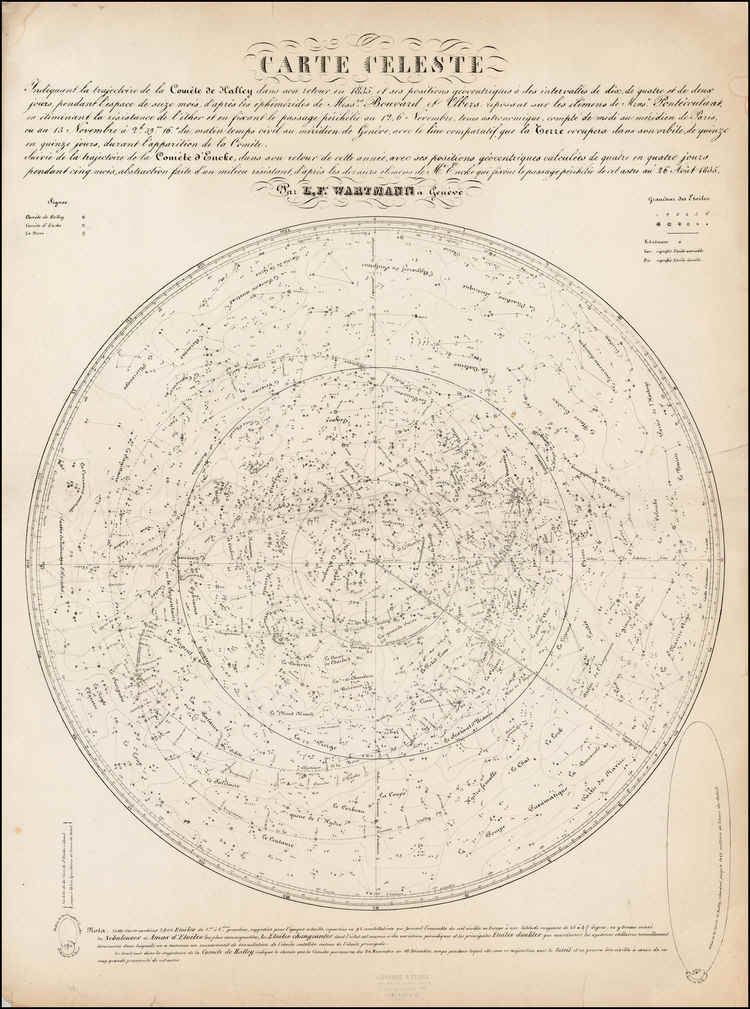
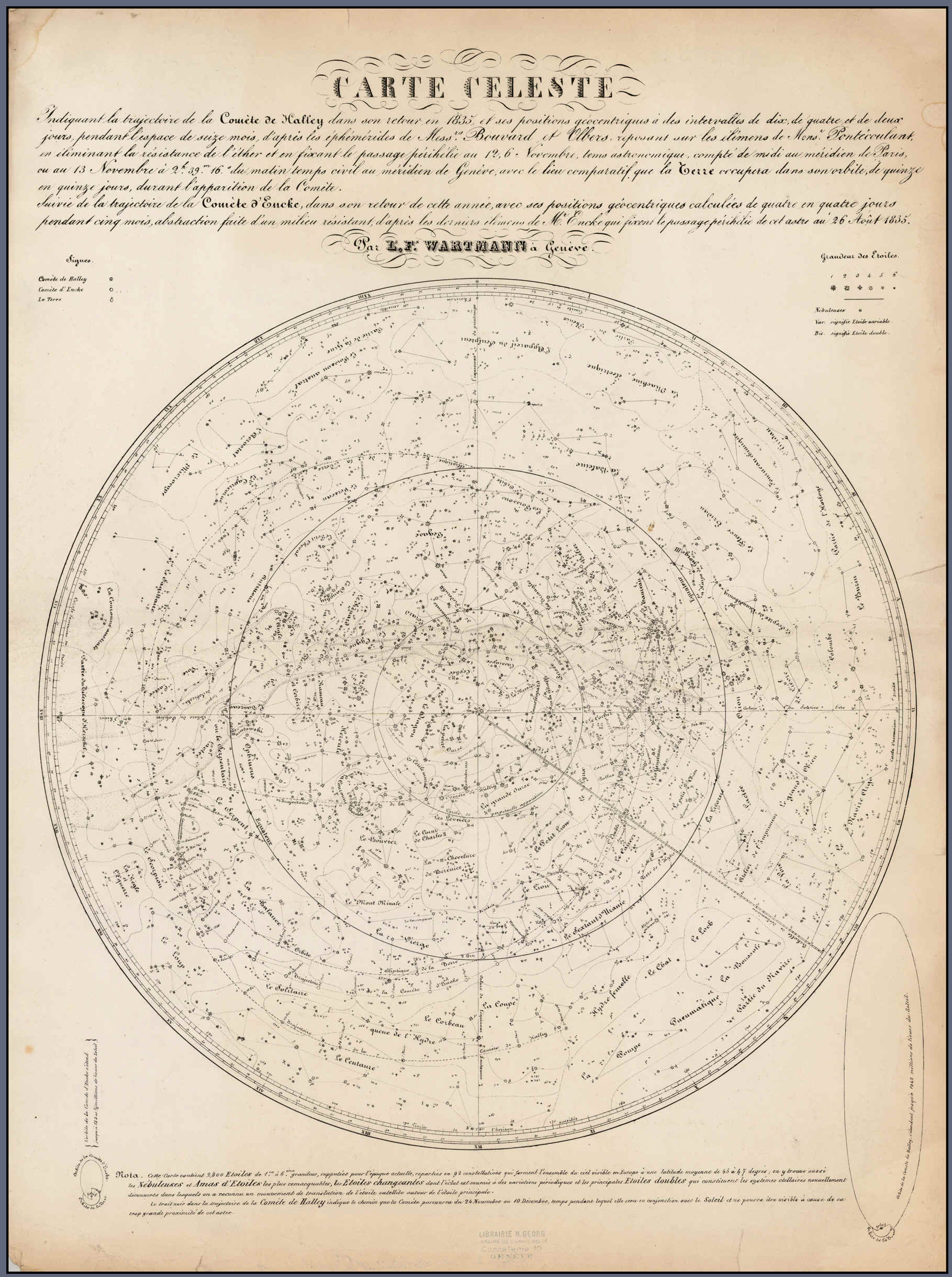
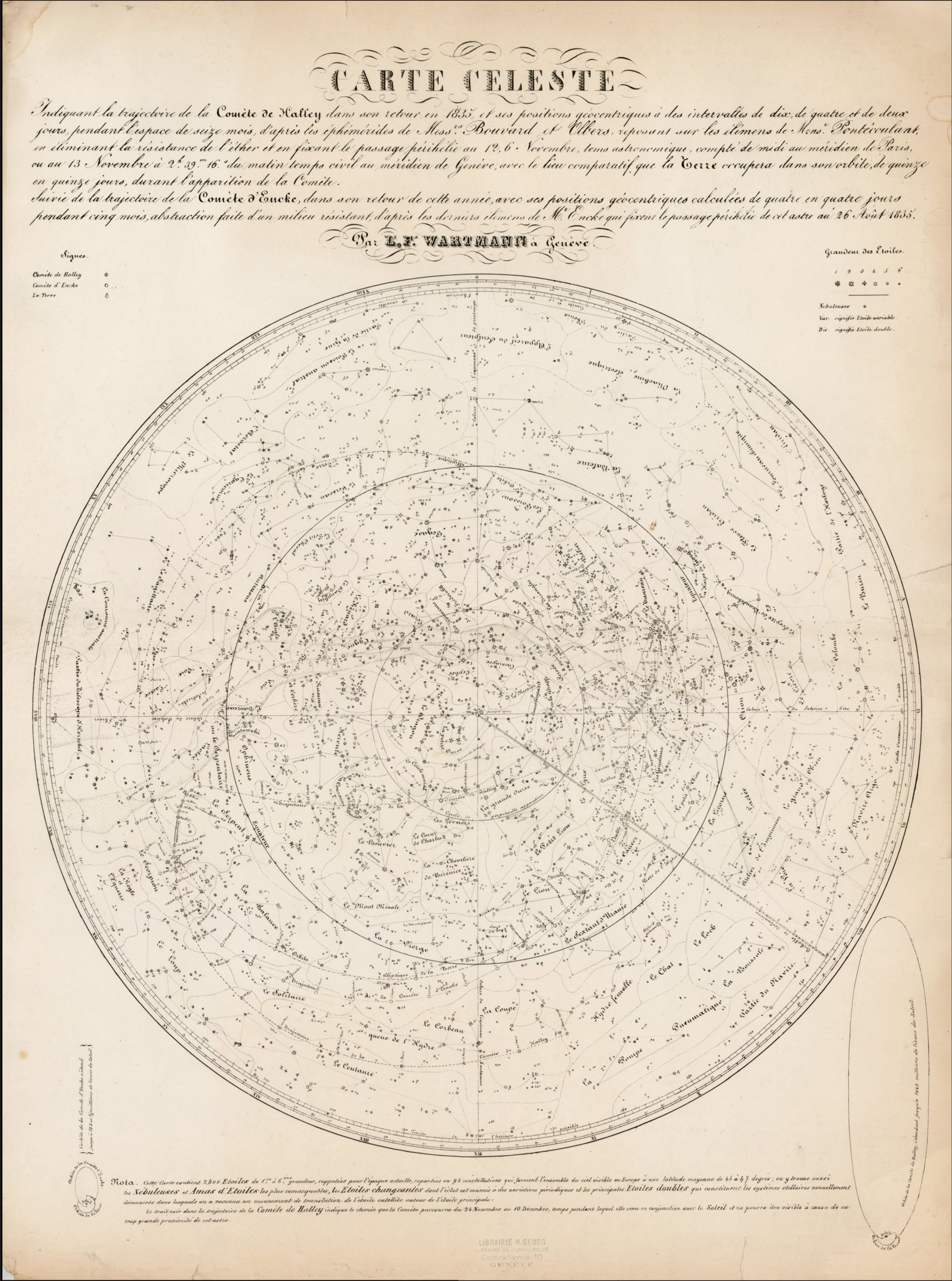
Altre informazioni su questo planisfero e su altre carte astronomiche dell’autore possono essere lette nell’articolo seguente:
Louis-François Wartmann
Carte céleste indiquant la première (e la seconde) partie des positions et de la marche de la Comète de Biela dans son retour en 1832 d’après l’Ephéméride de M. Santini, dèduite des nouveaux Elèmens de M. Damoiseau, corrigés de l’action perturbatrice de Jupiter, de Saturne et de la Terre, et qui donnent à la pèriode actuelle de cette Comète une valeur de 2445 jours, Genève 1832
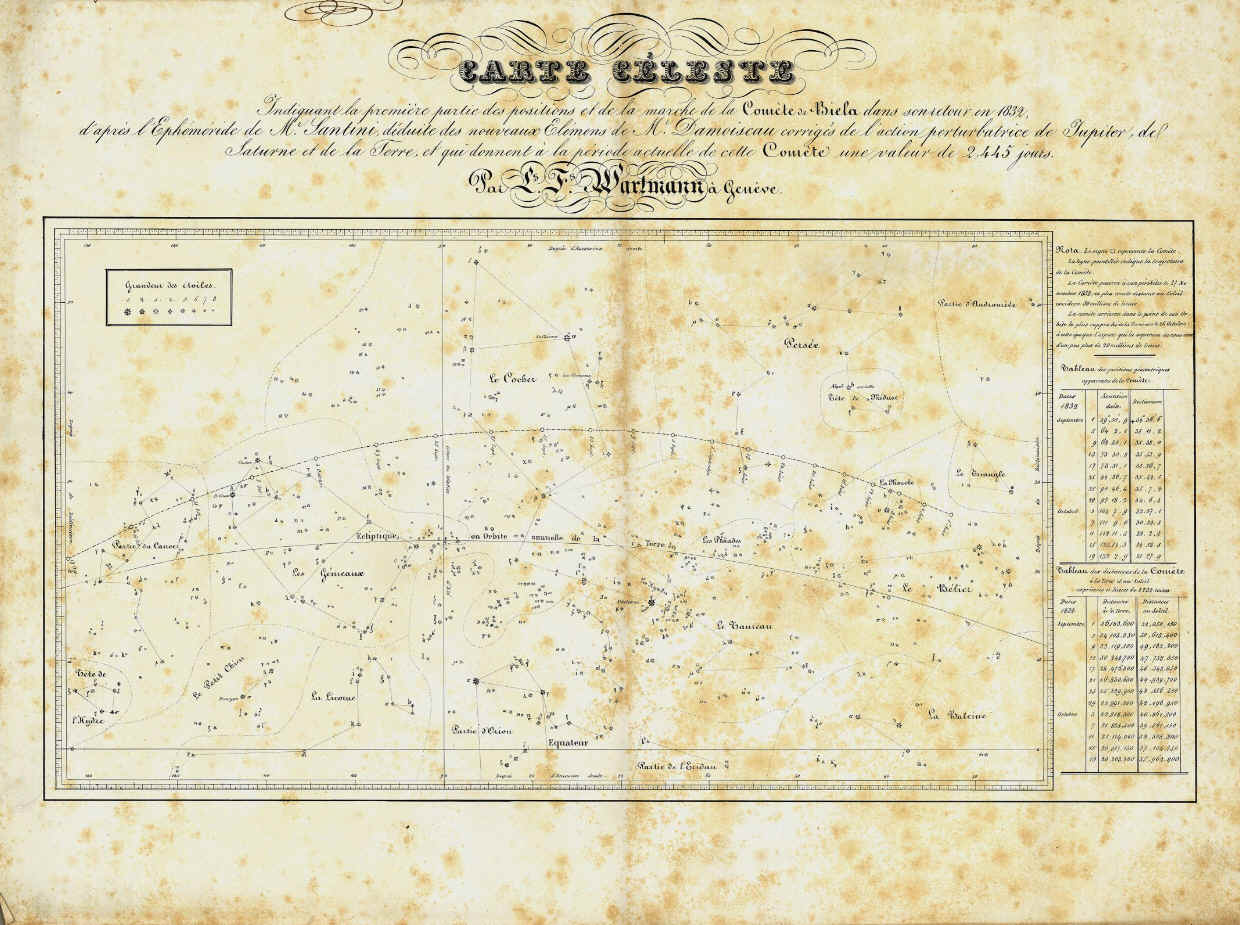
http://www.atlascoelestis.com/Wartmann%20Biela%201832.htm
di FELICE STOPPA
MARZO 2021
